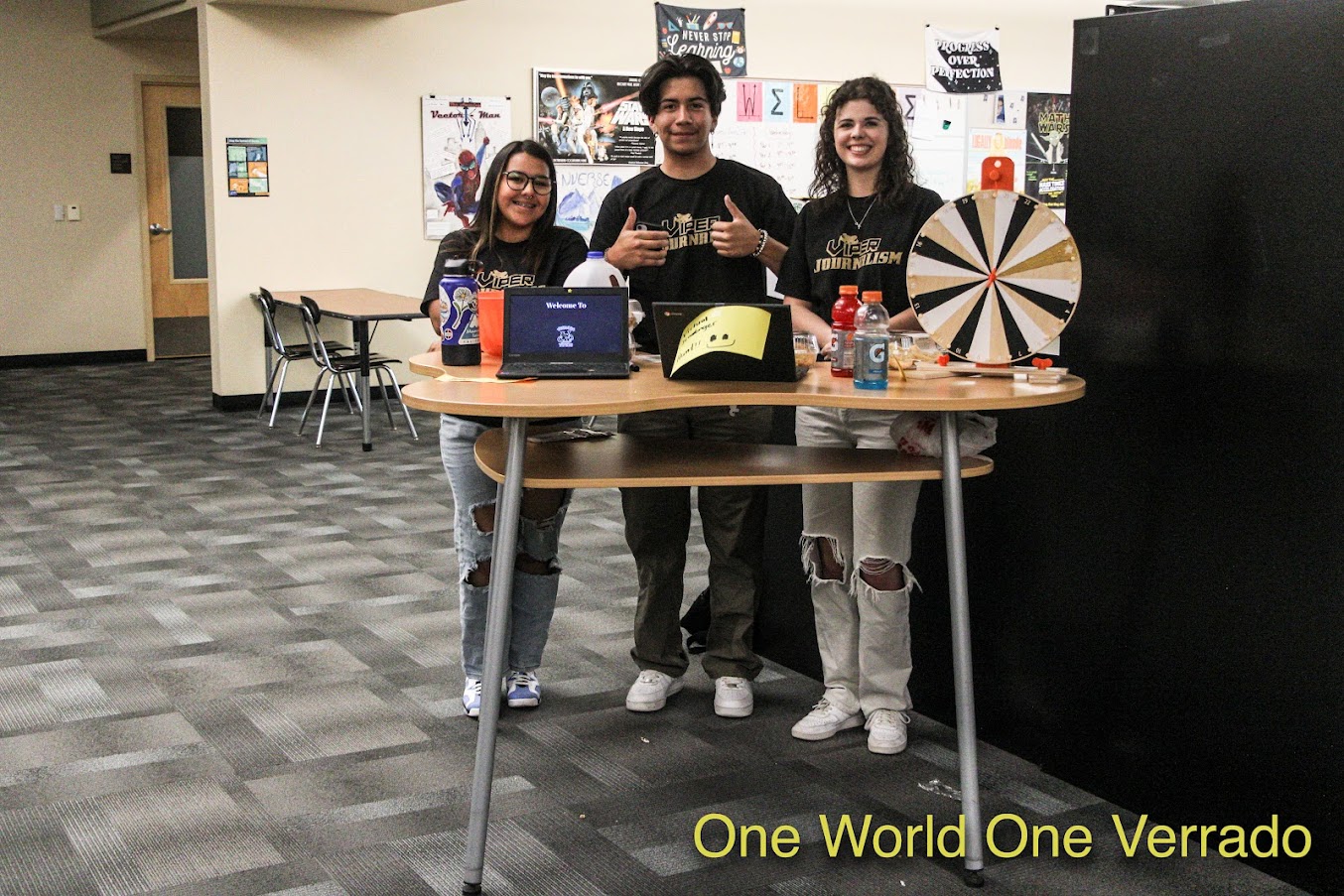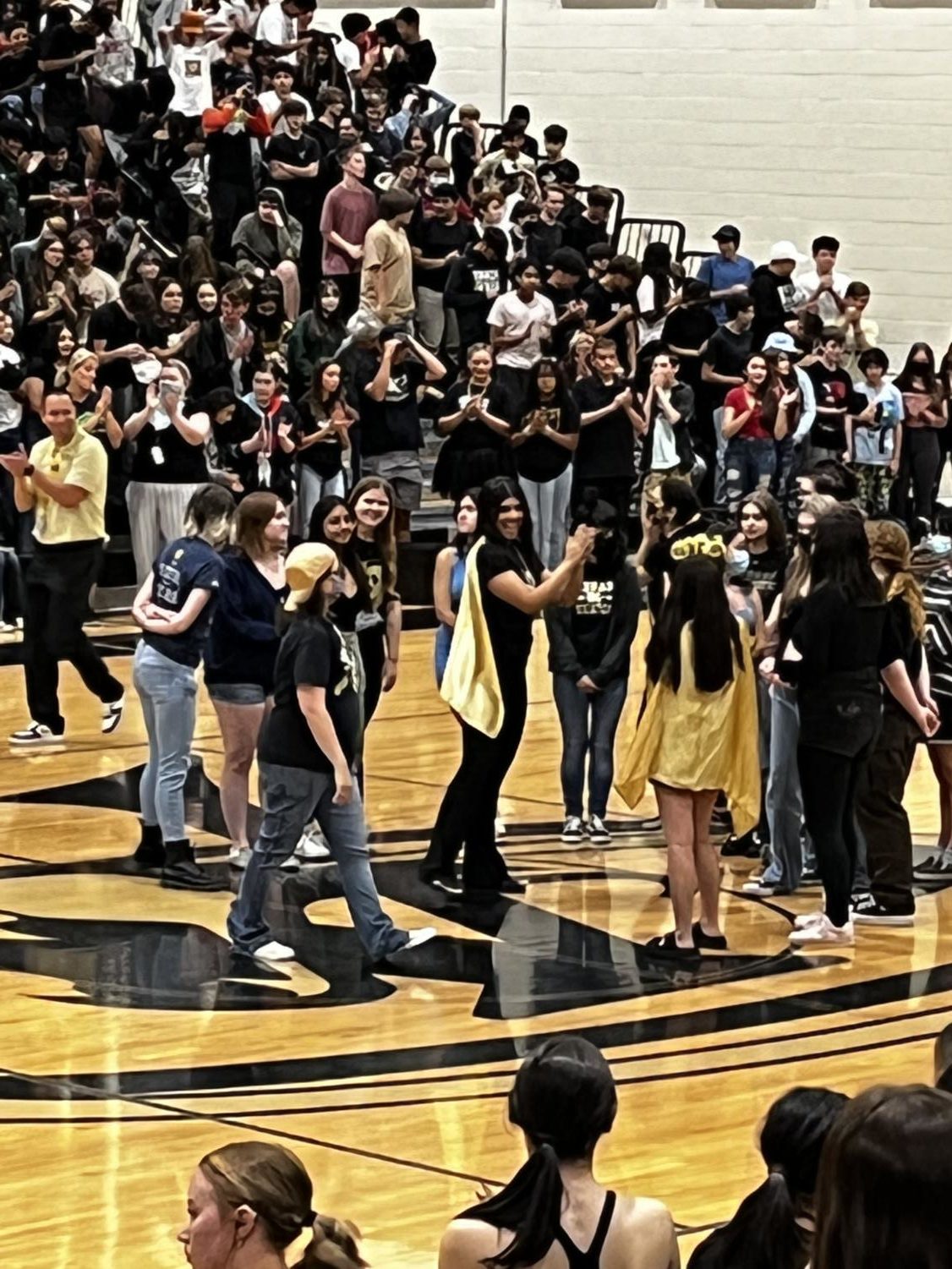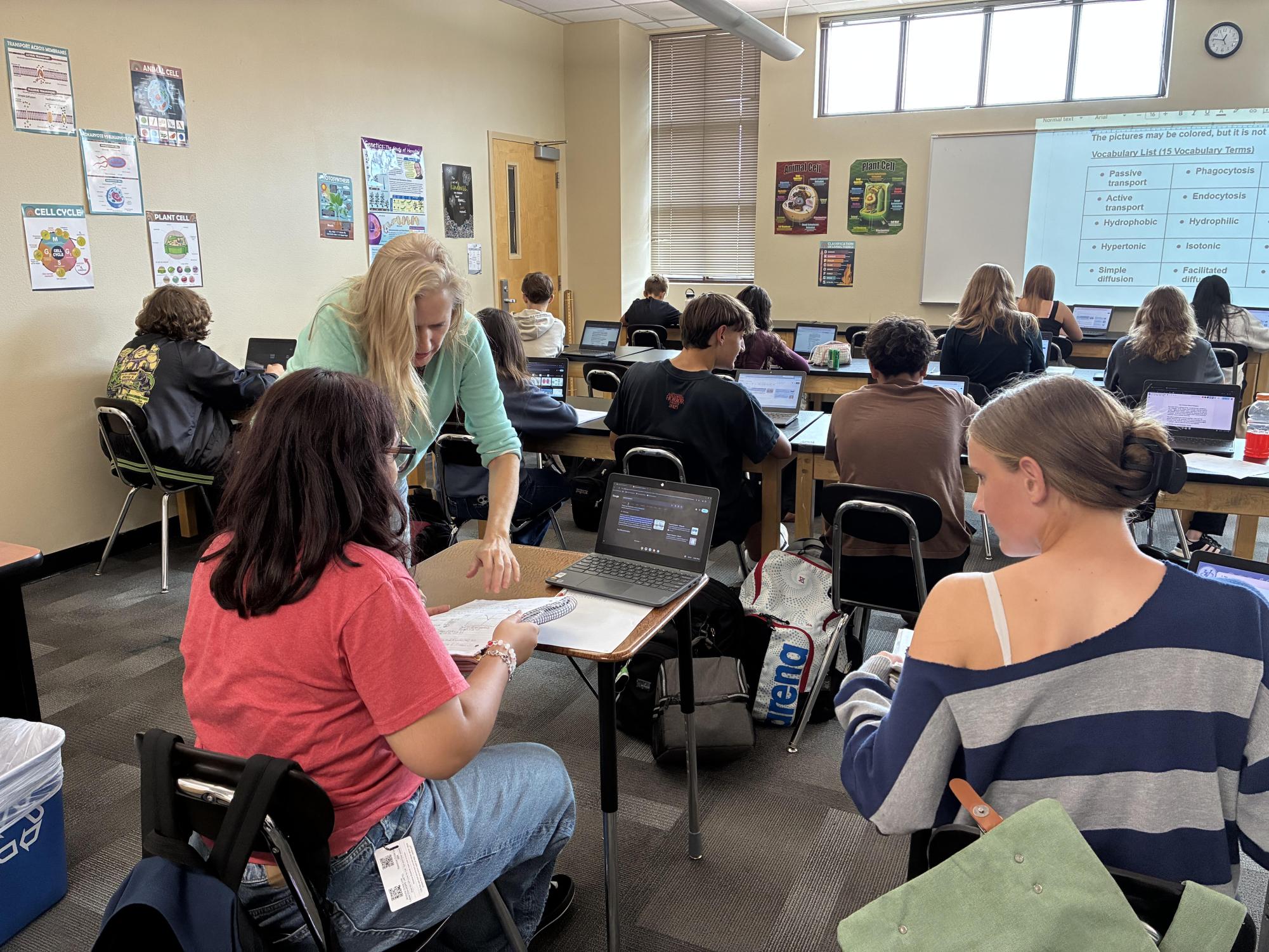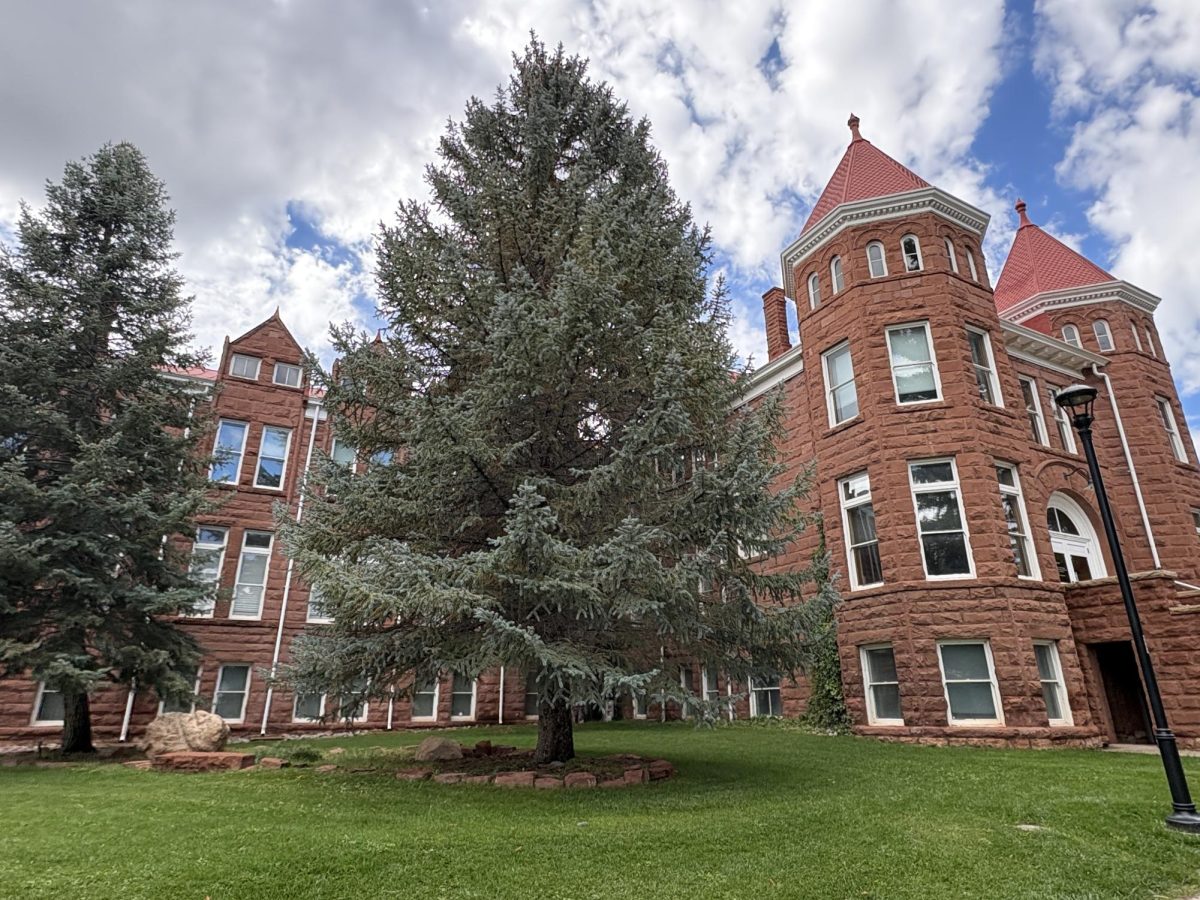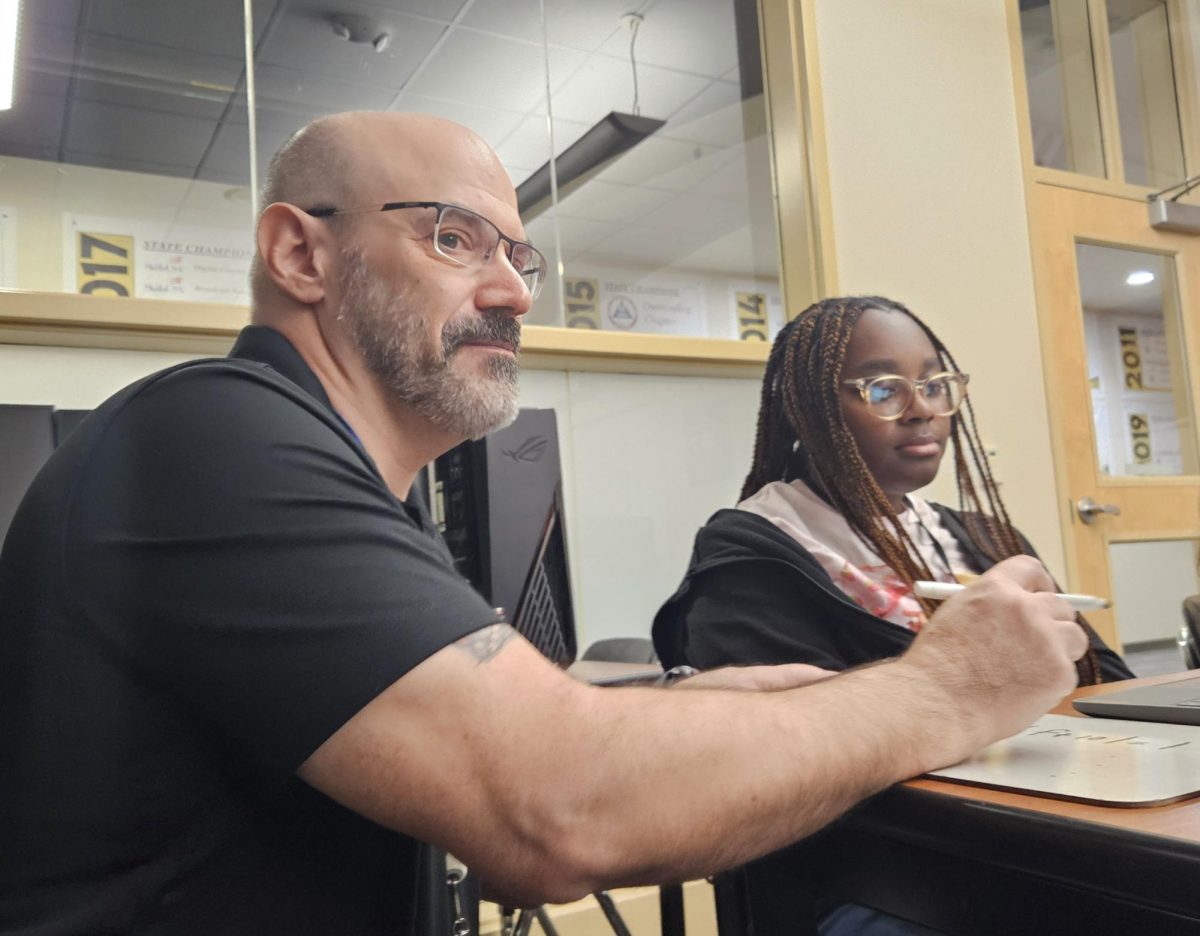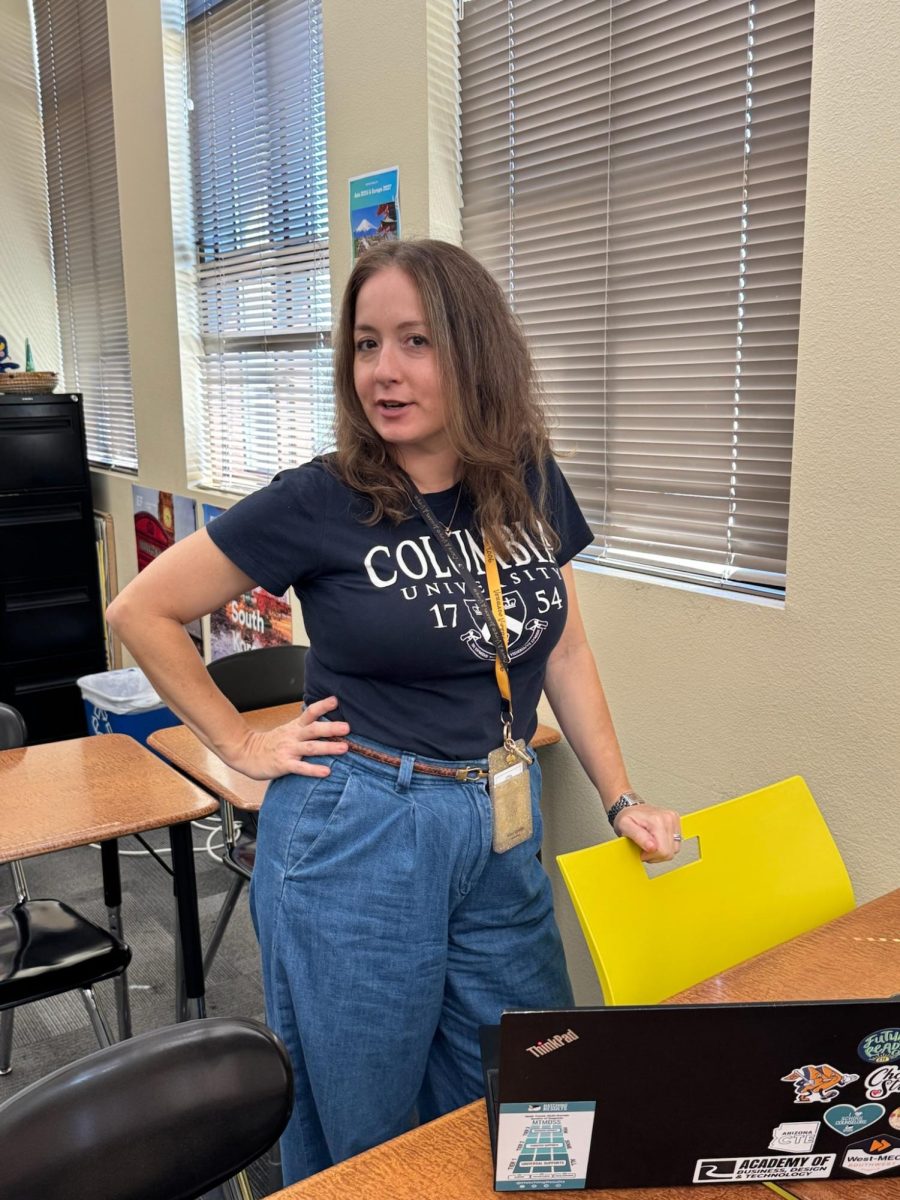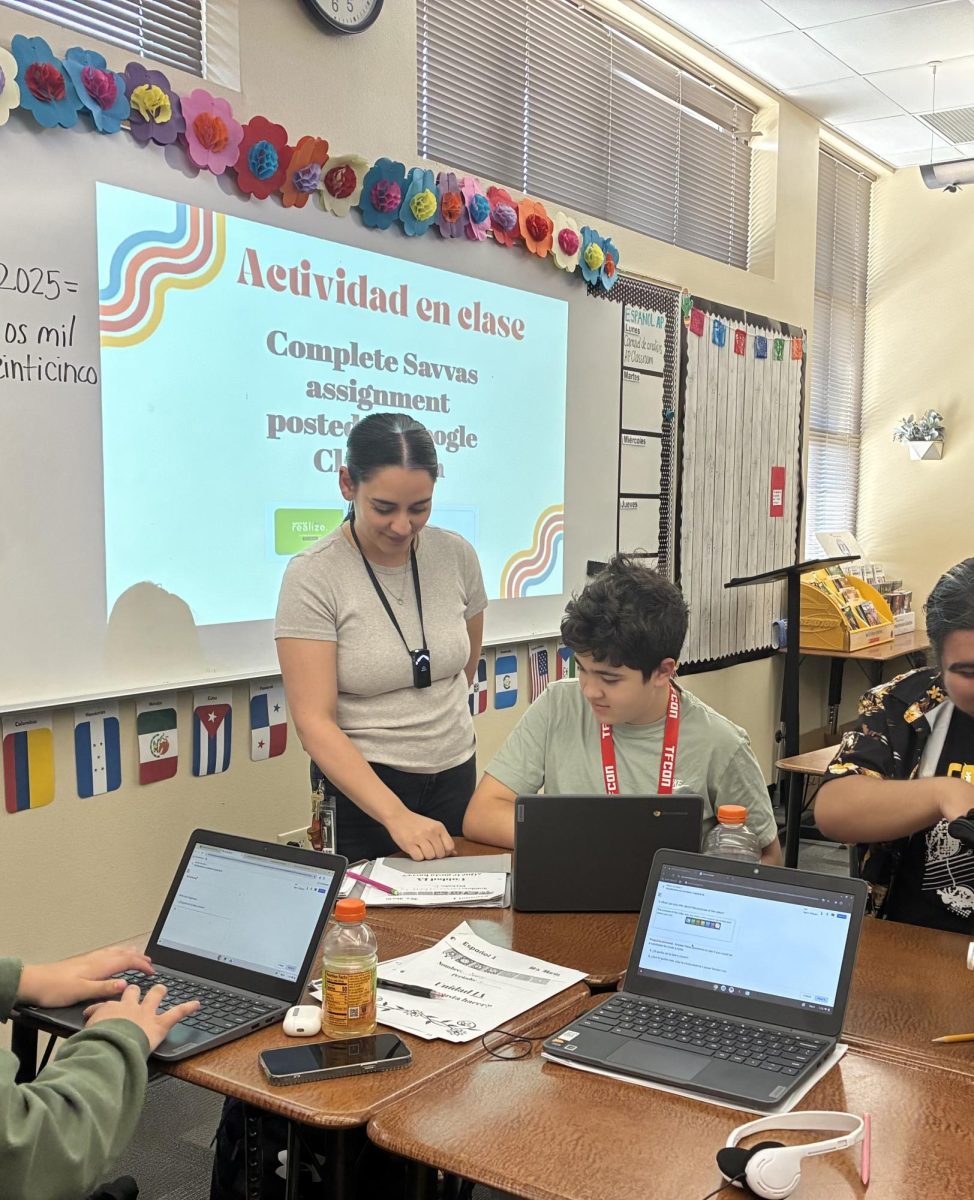Teaching both Biology and Latin might seem like an unusual combination, but for Ms. Wentz at Verrado High School, it’s the perfect way to explore the world in a multifaceted way. With a deep passion for both subjects, she finds unique ways to connect them, allowing her students to gain a deeper understanding of the living world and the roots of modern language and culture. “I love exploring the living world through Biology and connecting students to history and language through Latin,” Ms. Wentz shares. “Together, these subjects balance hands-on science with the puzzle of words. Biology lets me see students’ excitement when they understand how living systems work, while Latin allows me to show how much of our modern language and culture comes from the ancient world.”
One of the joys of teaching Biology for Ms. Wentz is the “aha” moments that occur when students grasp how the systems of life function. In Latin, her students discover how our modern languages have evolved from ancient roots. More fascinatingly, Ms. Wentz points out how these two fields often overlap. “I especially enjoy when students realize the two subjects actually overlap—like when Latin roots make tricky scientific vocabulary easier to decode.” Many students struggle with complex biological terms, but Latin roots provide a key to unlocking their meaning. For example, words like aqua (water), corpus (body), and cellula (small room) are rooted in Latin and have direct applications in biological terms. According to Ms. Wentz, these Latin roots simplify otherwise difficult concepts. “Once you know these roots, it’s like having a built-in dictionary. You don’t just memorize terms—you can figure them out, which makes science feel a lot less overwhelming.”
Latin is a treasure trove of roots that make learning Biology easier. Words like terra (earth), homo (human), and nucleus (little nut) provide insight into both the structure of biological systems and the language used to describe them. By teaching students the foundations of Latin, Ms. Wentz helps them build confidence not only in their Latin skills but also in their understanding of Biology. When asked about the similarities between studying a language and studying science, Ms. Wentz sees clear parallels. Both subjects require an eye for patterns, regular practice, and attention to detail. “In Latin, you analyze word endings and sentence structures; in Biology, you look for trends in experiments or patterns in nature,” she explains. “Both subjects also demand persistence: the more you practice, the more confident you become.” Whether it’s conjugating verbs in Latin or analyzing data in Biology, both disciplines require a methodical approach to problem-solving. Ms. Wentz encourages her students to practice regularly and focus on the patterns and details they encounter. The ability to spot connections and trends is a critical skill in both subjects, helping students to develop a stronger, more integrated approach to learning.
In addition to teaching Latin vocabulary and grammar, Ms. Wentz also incorporates ancient texts that touch on the natural sciences. Roman writers like Pliny the Elder explored the natural world, documenting plants, animals, and early medical practices. “Roman medical texts influenced later generations, and myths connected gods like Apollo and Asclepius with healing—the staff with the snake is still a medical symbol today!” she notes. Although ancient science was not always accurate by modern standards, these texts offer valuable insights into how people in the past tried to understand the world around them. By studying these works, students not only learn about ancient practices but also gain an appreciation for how scientific thought has evolved over time.
Ms. Wentz’s advice to students is simple yet powerful: “Stay curious, practice regularly, and don’t be afraid to ask questions or make mistakes—that’s how learning sticks.” Whether it’s in Biology or Latin, regular practice is key. In Biology, this could mean drawing diagrams or reviewing vocabulary. In Latin, it might involve practicing flashcards or translating short passages every day. Most importantly, Ms. Wentz encourages students not to separate the two subjects. “Use your knowledge of Latin roots to unlock biology terms, and apply your science mindset to problem-solving in Latin. When you integrate the two, they strengthen each other.”
By connecting Biology and Latin in her classroom, Ms. Wentz is helping students see the world through a more holistic lens, where language and science are intertwined. This approach not only enhances students’ understanding of both subjects but also provides them with the tools to continue exploring the world around them, one root and one discovery at a time. This integration of Latin and Biology isn’t just about learning two subjects—it’s about unlocking the door to a deeper understanding of the world, both past and present. Thanks to teachers like Ms. Wentz, students are equipped with the skills to see the connections between language and science, making learning both fun and meaningful.

